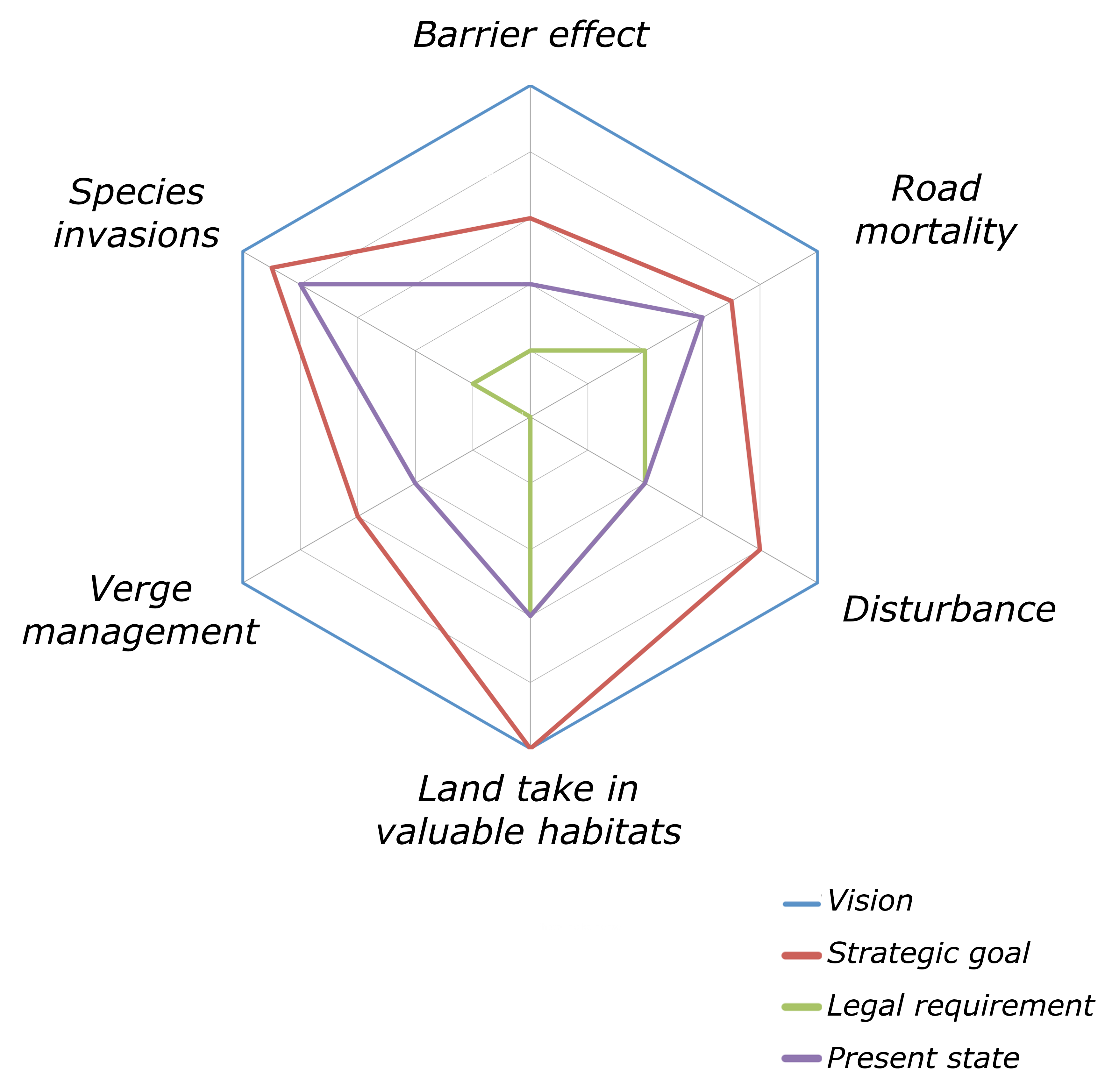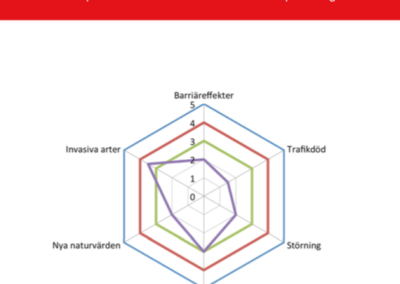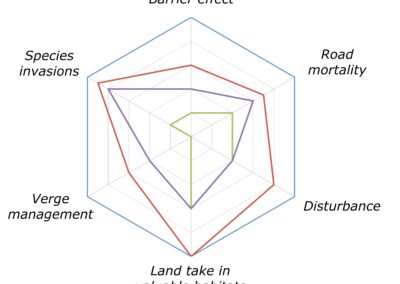Model of infrastructure impacts
TRIEKOL I-IIIn order to better understand the effect of transport infrastructure in the natural environment, TRIEKOL developed a conceptual model. The model describes the effects of transportation infrastructure on biodiversity in a pedagogical and transparent way.
The subproject Model of infrastructure impacts describes the development of this conceptual model.
Transportation infrastructure entails various impacts on biodiversity. The most prominent effects are barrier effects, noise and visual disturbances, traffic mortality and habitat loss. Others are the creation of new habitats and the invasion of alien species. Transportation authorities have a key role in managing these impacts, and in optimizing biodiversity values related to transportation.
But the impacts are extensive and complex and, at least for Sweden, the research conducted so far had not provided an overall perspective of impacts of roads and railroads on nature and biodiversity. Accordingly, research has not firmly pointed out which questions that are most crucial or need urgent attention. As a consequence, mitigation of negative impacts lags behind, in relation to what should or could be done. Thus, the efforts conducted does not reach their full potential.
A tool for communication and planning
In order to overcome this situation, TRIEKOL developed a conceptual model of the impacts of transport infrastructure on biodiversity, that could provide the necessary overview of the field.
The model structures the complex impacts into comprehensible pieces. It aims to identify the discrepancy between present state and desired state (be it vision, strategic goal or legal requirement) for each type of ecological impact.
The model as a whole describes the ecological sustainability of the transport infrastructure at a glance. It provides a simplified illustration that serves as a communication platform for eg. decision makers, planners, NGO:s, authorities or the general public. It can facilitate discussions, analysis and environmental assessments.
We are well aware that the model can not cover the full array of impacts described in literature, but we believe that we have found a reasonable trade-off between rigour and accessibility.
The model has, in its first version, proven effective as an aid for the Swedish Transport Administration (STA) to prioritize among nature conservation efforts and research. After selecting indicators for the impacts, the model can form the basis for a system to monitor the ecological performance of the transport infrastructure network.
Last but not least, the model development per se has provided a forum for in-depth discussion among specialists from different fields; between scientists and practitioners, among disciplines within the STA, and between STA and other relevant sectors. The discussion is creating a unified understanding of the complex impact of transport infrastructure on Swedish biodiversity.

The model visualized in a polar diagram, with draft examples of values (Vision, Strategic goal, Legal requirement and Present state) on different axes.
Publikationer och presentationer
The subproject Model of infrastructure impacts has published one report in Swedish and a poster at the ICOET conference in Scottsdale, Arizona in 2013.


